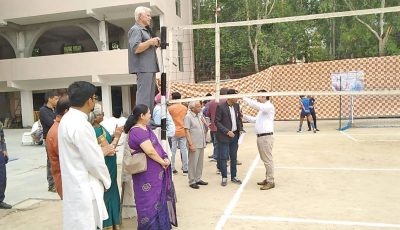Bonham’s bon femme
In the historic inauguration of Modi, the newly elected Prime Minister of India, attended by Nawaz Sharif, PM of Pakistan, with Hamid Karzai of Afghanistan and Mahinda Rajapaksa of Sri Lanka, the attempt at bonhomie in the political camaraderie during the event was evident.
The euphoria was shattered by news that a pregnant woman in Lahore was stoned to death by members of her own family for bearing the child of the man she loved rather than kowtow to the practice of family arranged marriage. Her father, arrested for murder, was following the “honor killings” conducted by relatives of women as punishment for alleged “adultery or other illicit sexual behavior,” aka not following family elders’ lead.
I am colleague to a self-conscious group within the Christian covenant that tries to overcome the normal patterns of patriarchy deeply embedded in the symbol system of 3,000 years of tradition. Renegades of institutional rites and rituals, they try to rearticulate previous metaphorical expressions into existential language that might resonate on the reality of living in our time. Appropriately, the group is called the Realistic Living Institute, holding Christian Resurgence Circles in their local social net as a formation tactic to promote its understanding and behavior.
There is no “bonfemme” in the French language as used in our title. I use it in lieu of “bonhomie” (from bonhomme, good fellow), which means “cheerful friendliness”; a geniality in the sense of “he exuded good humor and bonhomie.” We often see it used like the word “mankind” and “manpower” for both genders, sticking with the masculine term. Its insidious subversive quality of patriarchal superiority is often not appreciated until we refer to a female head of a committee as the “chairman”!
The man’s liberation movement of my familiarity appropriates intense sensuality in instinct, passionate engagement in intuition, comprehensive broadness in both lateral and longitudinal lines of intelligence, and inclusiveness of corporate intent and behavior in acts and deeds, qualities normally attributed to the influence of the female of the specie!
In the U.S., women finally voted in 1920. The great lengths women went through to break into restricted areas like journalistic covering of the Normandy landings to the running of the Boston Marathon is viewed as heroic. We shall keep quoting the old Chinese saying that “women hold half of the sky” (Nu ren/fu nu neng ding ban bian tian), revived by Mao Zedong during his Zhongguo watch, not because it accomplished the paradigm shift it was meant to accomplish, for it didn’t, but the notion that the female of the specie is a partner to their chosen counterparts highlight the wisdom that a person is not complete without partnering with someone in a social net. (Partnering has since gone beyond the gender limits as same-sex marriages are legalized.)
Institutions of covenant, as it is being reasserted in marriage in all its forms, means a relationship of mutual consent and trust where the French sense of vive la difference is not just assumed but honored and encouraged. This is most evident in the way we are asked to be sensitive in the use of our best social tool, language.
The Ecumenical Institute of Chicago and its related institutional offspring hold itself accountable to its own “faith” statements mirrored in the practices of its own institutions. It was a hard awakening as it became clear how deeply embedded the assumption of male dominance was in its language in spite of its enlightenment. The Realistic Living Institute, an offshoot of the spirit movement that EI came to represent, struggles with the same contradiction within its members even with the heightened consciousness of its own duplicity, unconsciously as it often comes, in the sad affair.
To their credit, the EI folks and their extended relations are at least conscious of the very contradiction it identifies as also a part of its own body operation and is working on alternatives. Clearing up the language is just the beginning; that’s why I was delighted to read of a young high school student who started using “ze” to replace the pronouns “he and she,” which I had temporary slashed with “s/he.” “Ze” is more creative and innovative! More important than retranslating historic sacred writs beyond their authors’ cultures of patriarchy to the core of experience, is the appropriation of soft technologies and traits especially those articulated by the female of the specie.
MSNBC TV recently picked up research that indicated the casualty difference between hurricanes with feminine and masculine names showed a higher rate at almost three times in the former against the latter. Why anyone would make this research is anyone’s guess; why MSNBC decided to air the result is, in my view, to cater to a high morning female TV audience! Still, we agree on awakening the female audience to the biases we hold.
My point: the female of the specie is still getting a bum steer. Bonfemme is a bombshell I recommend to the “fair thee well” crowd to use.



























